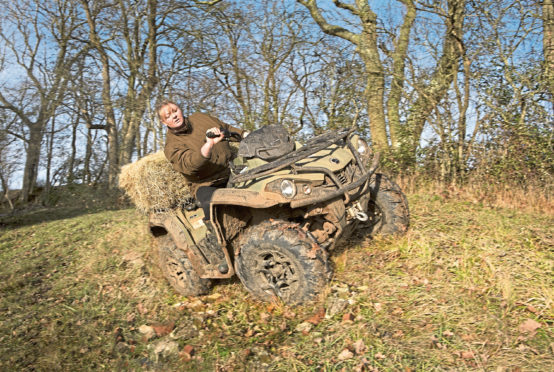New research from Aberdeen University has confirmed what many farmers already know – that they take risks because they put financial implications ahead of their personal safety.
However the findings suggest that farmers might be more likely to reassess a risk if it is presented in terms of financial impact.
As many as three fatal farm accidents are reported in the UK every month and there has been little improvement in the statistics over 25 years, despite changes in the health and safety culture.
These dire figures prompted Industrial Psychology researcher Dr Amy Irwin to investigate the different types of risk that farmers deal with on a daily basis, in order to understand how farmers approach risk, what drives it and how safety can be improved.
She said: “Farmers are a unique group of workers in that they often grow up, and learn how to manage tasks, on a farm. Farming is a high-risk occupation that involves long hours, weather dependent tasks, a lot of lone working and management of multiple competing demands.
“There is an assumption that they engage in dangerous behaviours and people aren’t sure why. I wanted to see whether one of the factors that might influence their behaviour is the characteristics of the risk itself. “
The 148 farmers recruited to her study from across the UK were presented with different types of risky scenarios and asked to indicate whether they would work on despite the risk. Examples included faulty machinery, feeling tired and ditch erosion.
The results showed that farmers reacted differently according to the characteristics of the risk and in the case of faulty equipment – such as an unexplained leak – they would generally not go ahead, not because of reasons related to personal safety, but instead due to the risk of damaging expensive equipment. However in a stress scenario, Dr Irwin found that most of the participants would go ahead, as farmers did not regard stress as a reason to stop work.
She said: “These results indicate that farmers are not assessing each risk purely from a safety perspective – they are also assessing it in terms of financial gains or losses, both machinery repair and issues linked to work pressure. It is important to consider the different risks that a farmer has to deal with and that the messaging for these risks might need to be individualised. Specifically – if you messaged a type of risk in terms of financial ramifications – the farmer might be more likely to pay attention.”
NFU Scotland president Andrew McCornick said: “So many accidents that happen on farms occur because a farmer is rushing, not wanting to waste money, or is just not putting their safety and wellbeing as a priority.
“My advice to farmers when it comes to safety would be to stop, take a breath, and think about what the safest way to do a job is. It may not always be the quickest or the cheapest, but in the long run it will be the best.”
